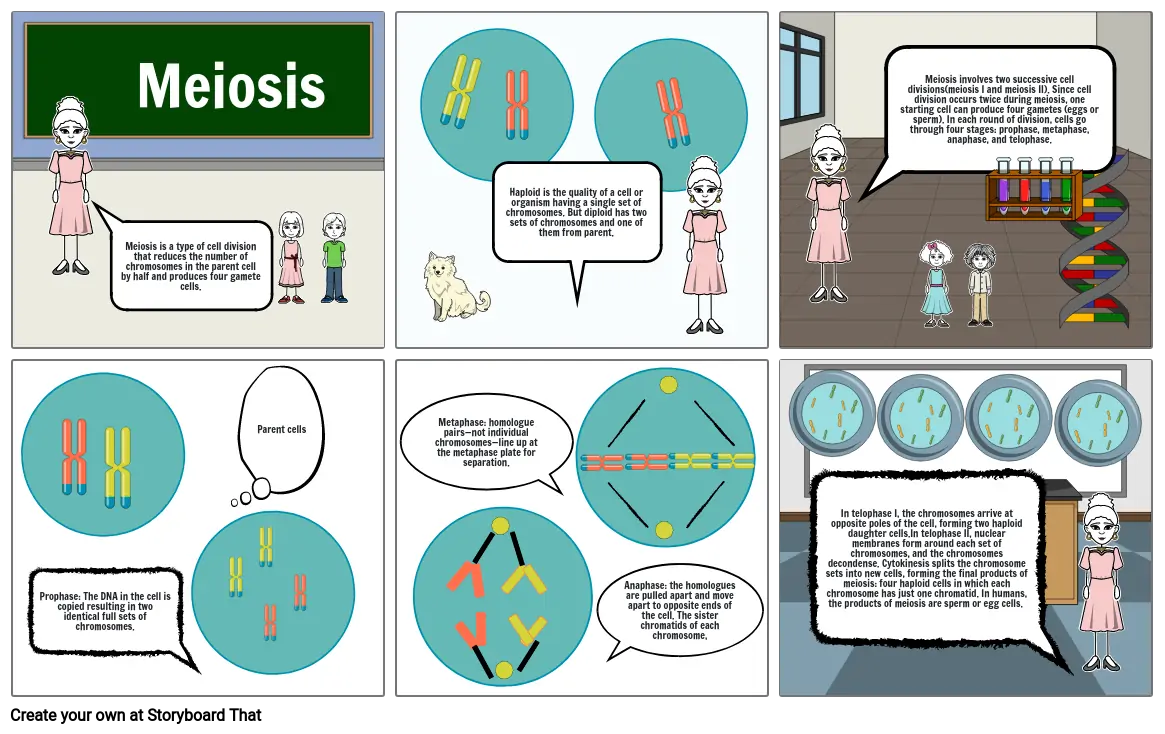Meiosis

Storyboard Text
- Meiosis is a type of cell division that reduces the number of chromosomes in the parent cell by half and produces four gamete cells.
- Meiosis
- Haploid is the quality of a cell or organism having a single set of chromosomes. But diploid has two sets of chromosomes and one of them from parent.
- Meiosis involves two successive cell divisions(meiosis I and meiosis II). Since cell division occurs twice during meiosis, one starting cell can produce four gametes (eggs or sperm). In each round of division, cells go through four stages: prophase, metaphase, anaphase, and telophase.
- Prophase: The DNA in the cell is copied resulting in two identical full sets of chromosomes.
- Parent cells
- Metaphase: homologue pairs—not individual chromosomes—line up at the metaphase plate for separation.
-
-
-
-
-
-
-
-
- Anaphase: the homologues are pulled apart and move apart to opposite ends of the cell. The sister chromatids of each chromosome,
- In telophase I, the chromosomes arrive at opposite poles of the cell, forming two haploid daughter cells. In telophase II, nuclear membranes form around each set of chromosomes, and the chromosomes decondense. Cytokinesis splits the chromosome sets into new cells, forming the final products of meiosis: four haploid cells in which each chromosome has just one chromatid. In humans, the products of meiosis are sperm or egg cells.
Over 30 Million Storyboards Created

